Managing Phytophthora root rot in Christmas tree plantations
Careful site assessment and species selection are critical to minimizing the impacts of this potentially devastating disease.

Phytopthora root rot of Christmas trees
Phytophthora root rot is a destructive disease caused by several species of Phytophthora. Phytophthora (meaning “plant destroyer”) species belong to a group of organisms known as water molds, as they need water to complete their life cycle. They can infect any conifer species grown as Christmas trees (firs, spruces, pines, Douglas-fir); however noble fir, Fraser fir and white fir are the most susceptible species among trees commonly grown in Michigan and surrounding states. Any age class of tree can potentially become infected, from seedlings to mature, harvestable trees.
Phytophthora root rot is a soil-borne disease and often appears in patches across the plantation. In saturated soils, Phytophthora produces mobile zoospores, which can readily move to healthy tree roots and initiate a new tree infection (Photo 1). Disease development is often more pronounced in low-lying, poorly drained and compacted soils as they tend to have saturated soils more frequently.
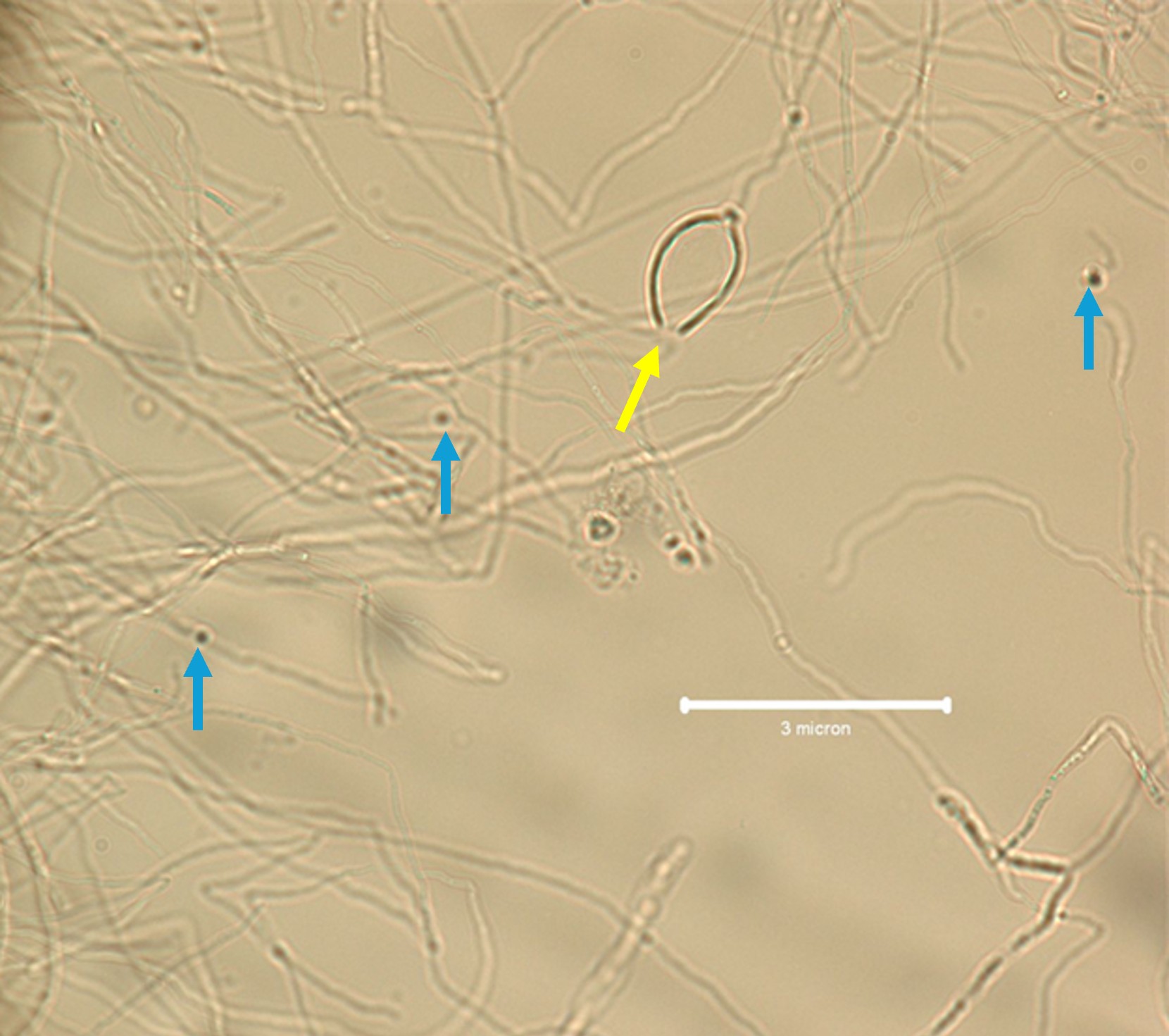
Aboveground symptoms of infection
Symptoms of Phytophthora root rot often resemble drought injury or Armillaria root rot, as the disease interferes with the ability of tree roots to take up water. Trees infected with Phytophthora often turn yellow-red and may die suddenly (Photos 2 and 3). Branch dieback, often beginning near the base, is a typical early symptom of infection. Sometimes chlorotic foliage can be observed on the lowest whorl of branches (Photo 2). Outbreaks of Phytophthora root rot may appear to affect trees at random but are frequently concentrated in low-lying areas.
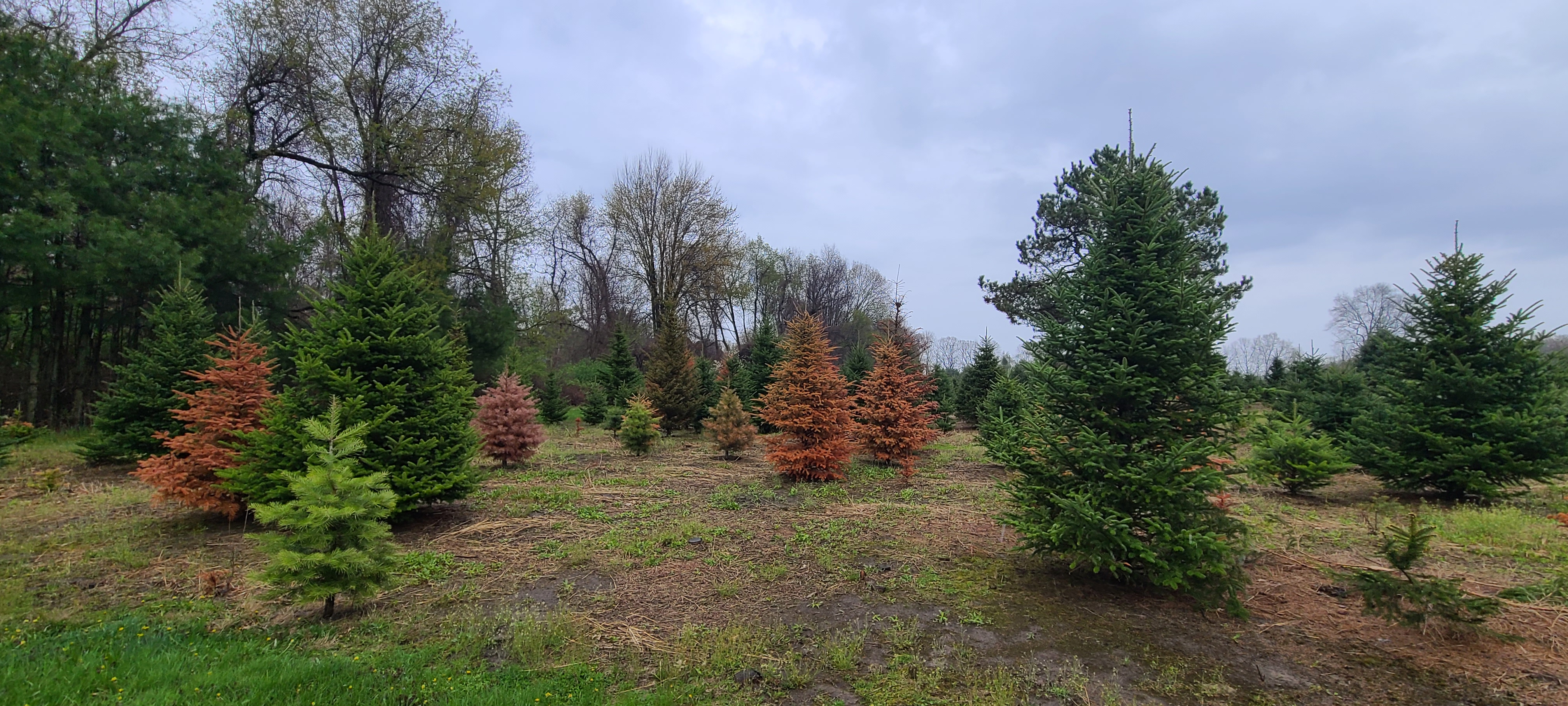
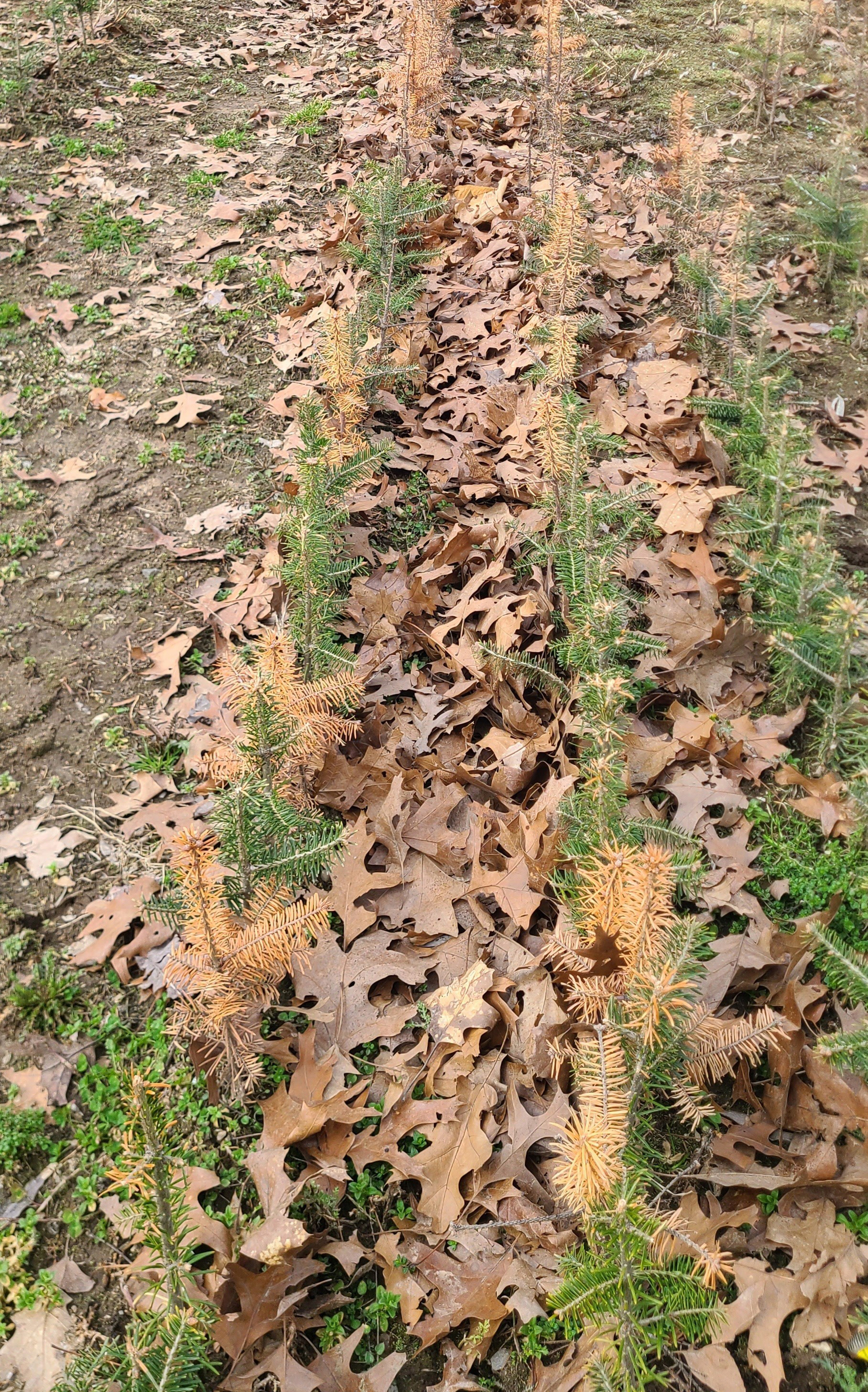
Belowground symptoms of infection
Root decay and cankers at the base of the tree, known as basal cankers, are the primary belowground symptoms. Removing outer bark from the base of infected trees by peeling/shaving frequently reveals distinct reddish to brown discoloration of the inner bark (Photo 4). Roots from infected trees often show rotting with “sloughing” (outer layer easily separates from the core) of the root cortex (Photo 5).
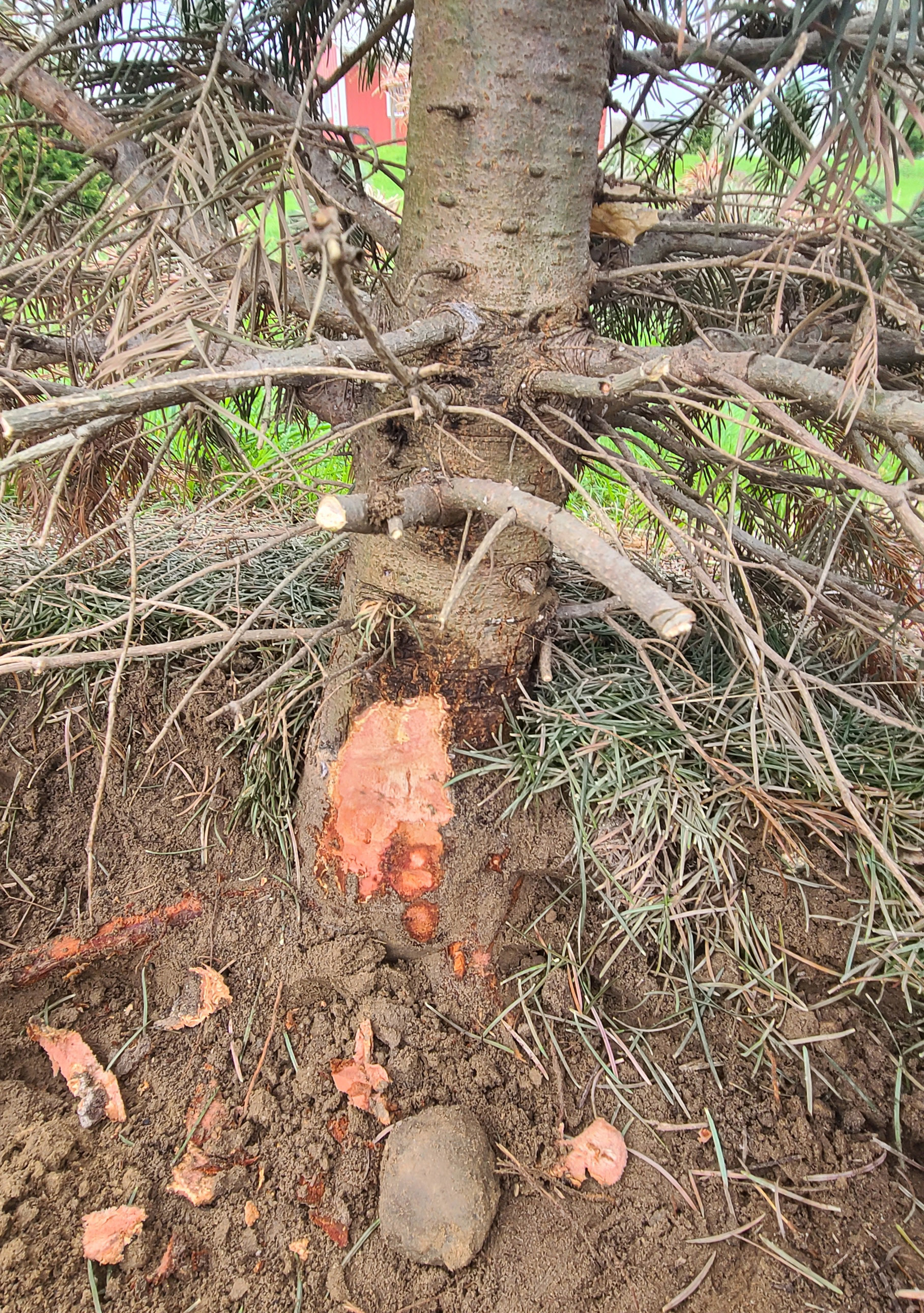
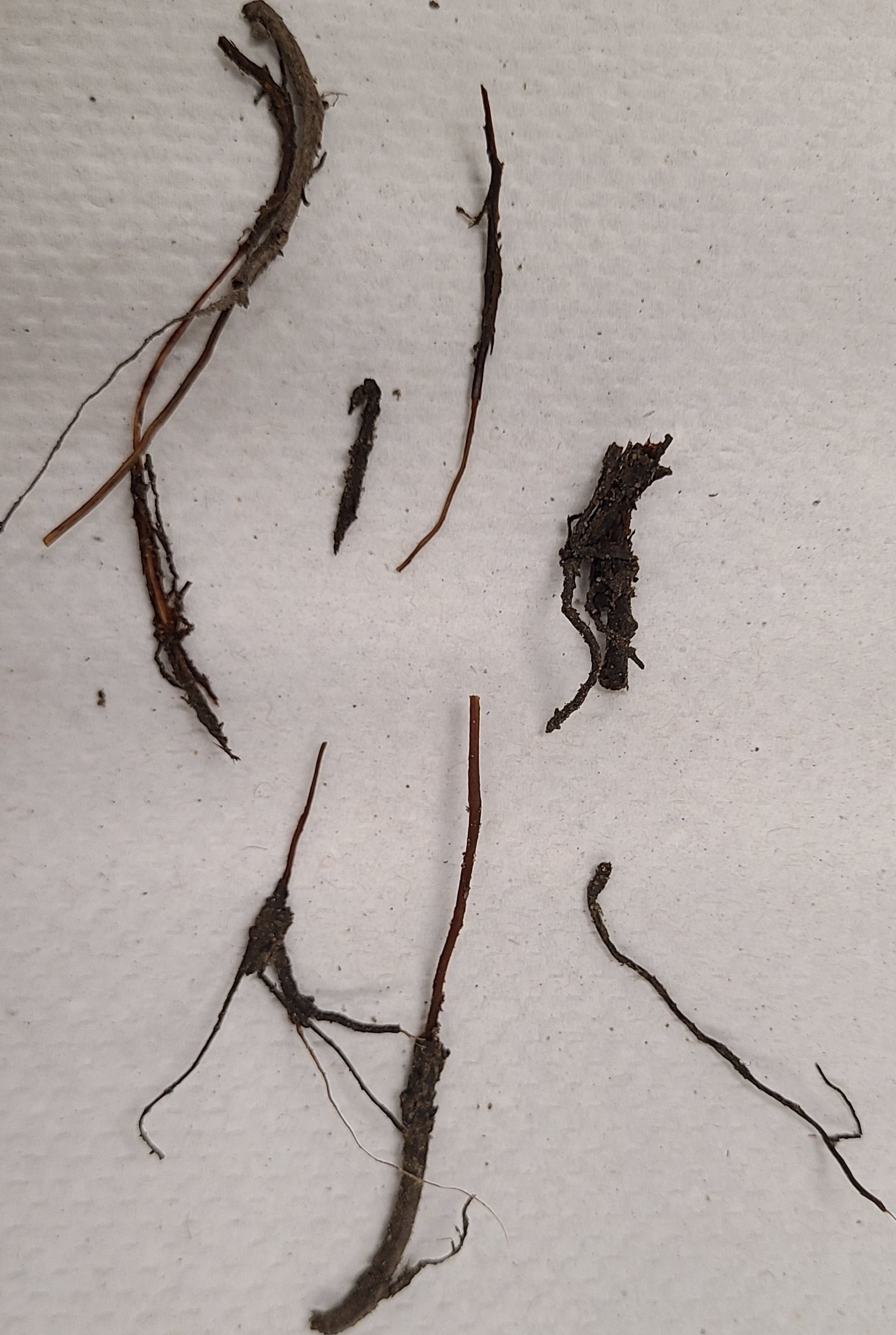
Preventative measures for Phytophthora root rot
The best management option for Phytophthora root rot is to prevent the introduction of the pathogen into the field. Michigan State University Extension recommends inspecting nursery stock for any signs of Phytophthora root rot. Nursery stock that is suspicious (off color, branch dieback) should be disposed of outside of the production area and not planted.
Irrigating with surface water, such as ponds or streams, can also introduce Phytophthora into a field. If possible, use ground water from wells as this has less chance of being contaminated with Phytophthora.
If Phytophthora root rot is confirmed in a field, try to minimize the spread of the disease to other areas in the field. Phytophthora species are easily spread through infested soil and infected plant material, often via water movement, equipment or transplanting. Limit the spread to surrounding areas by minimizing erosion and movement of infected root material. Spores of Phytophthora can remain dormant for three to 10 years prior to conditions becoming favorable to disease development.
You should also manage sites to make soil conditions less conducive for Phytophthora root rot. Avoid planting highly susceptible species in low-lying areas with poor drainage, as saturated soil promotes disease development. Phytophthora root rot can develop in as little as 4-8 hours of soil saturation. Add soil drainage (ditches or drain tiles) and use irrigation methods that avoid over-saturating the soil.
What to do if you suspect Phytophthora root rot?
If you suspect your trees may be affected by Phytophthora root rot, reach out to Michigan State University (MSU) Extension Christmas tree educator Bill Lindberg and/or have your trees diagnosed at the MSU Plant and Pest Diagnostic Laboratory. If Phytophthora root rot is confirmed, promptly remove and destroy any infected trees and seedlings and limit access to that area of the field to prevent further spread of the disease.
It is important to note that there are currently no fungicide protocols that will cure trees infected with Phytophthora root rot. Fungicide applications are not effective when conditions are favorable for disease development. Replant infected sites with less susceptible species like spruces, Turkish fir and Canaan fir. Disease tolerance may be affected by site specific factors and specific Phytophthora species present.



 Print
Print Email
Email

